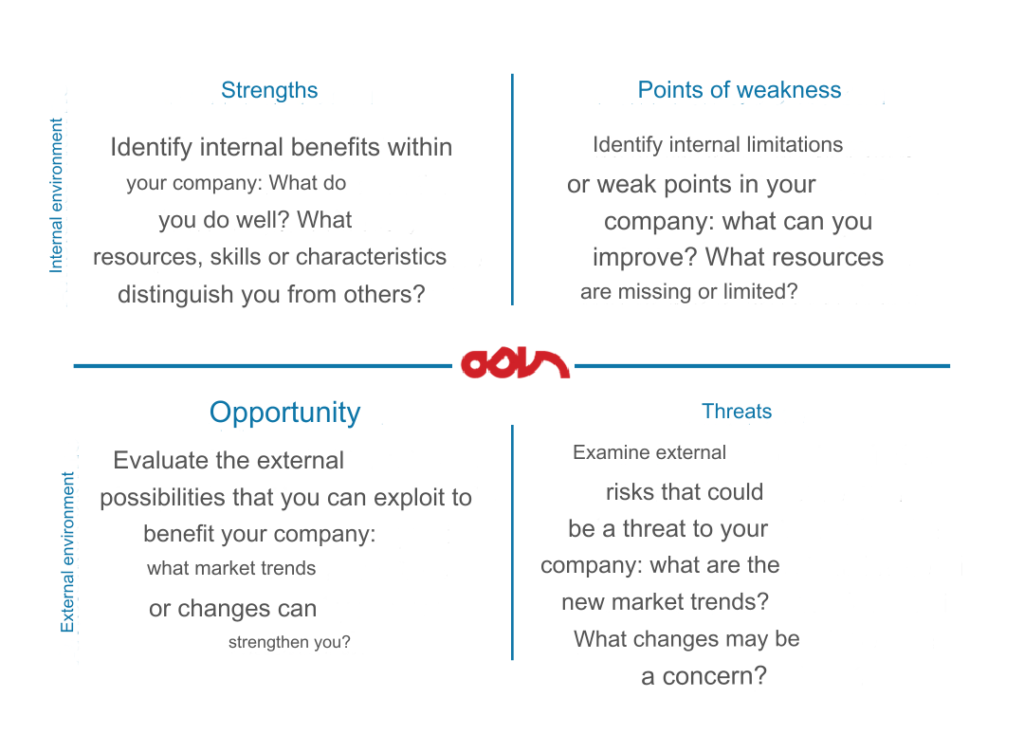The Power of SWOT Analysis
Standing out from the crowd and forging a path to success is a challenge many companies face. Yet, the solution might be simpler and more strategic than one might think. The key to differentiating your business and sculpting a victorious strategy lies in the SWOT analysis, a foundational tool in strategic planning that shines a light on the road to achievement by identifying strengths, weaknesses, opportunities, and threats.
What Exactly is SWOT Analysis?
At its core, SWOT analysis is a comprehensive evaluation method designed to provide a 360-degree view of the internal and external factors impacting a business. This strategic assessment delineates your company’s strengths (Strengths), weaknesses (Weaknesses), opportunities (Opportunities), and threats (Threats), proving to be an invaluable component in any strategic planning endeavor.
The internal elements, strengths, and weaknesses, are those over which your business has some degree of control. These factors distinguish your company in the marketplace. Conversely, opportunities and threats arise from the external environment, necessitating a well-crafted strategy for adaptation and foresight.

The Practicality of SWOT in Diverse Sectors
To illustrate the versatility and effectiveness of SWOT analysis, let’s explore its application in two distinct sectors: healthcare and bespoke tailoring.
Healthcare Sector Example: A Cosmetic Surgery Clinic
Strengths:
- Clinical Excellence: A team of cosmetic surgeons renowned for their surgical expertise and innovation.
- Advanced Equipment: State-of-the-art technology for less invasive treatments with quicker recovery times.
Weaknesses:
- High Costs: Premium specialization and technologies result in higher market prices.
- Limited Accessibility: The clinic’s location in a less central area could hinder some patients’ access.
Opportunities:
- Demand for Non-invasive Treatments: A trend towards safer, less invasive aesthetic treatments.
- Research Collaborations: Potential partnerships with research institutes to pioneer new treatments and techniques.
Threats:
- Regulatory Challenges: Potential impact of new healthcare regulations on operations.
- Rising Competition: The emergence of new clinics and online services offering cost-effective alternatives.
Bespoke Tailoring Example: Custom Tailored Shirt Production
Strengths:
- Made in Italy: The exceptional quality of materials and artisan craftsmanship.
- Brand Recognition: A well-established and respected brand.
Weaknesses:
- High Costs: The price of quality often exceeds the market average.
- Limited Distribution: Geographical limitations restrict market presence.
Opportunities:
- Growing Demand: Sustained interest in bespoke tailoring.
- Luxury Brand Partnerships: Potential for exclusive collaborations that could open new avenues.
Threats:
- Low-cost Competition: The rise of budget-friendly alternatives.
- Economic Uncertainty: Potential demand erosion due to financial instability.
Conclusion: The Strategic Advantage of SWOT Analysis
SWOT analysis offers an essential perspective, empowering businesses to navigate the market landscape with increased awareness and craft precise, targeted marketing strategies. By understanding and leveraging your company’s unique strengths, addressing its weaknesses, seizing opportunities, and preparing for potential threats, SWOT analysis becomes an indispensable tool in the arsenal of any business aiming for growth and success.
Did you find this exploration into SWOT analysis insightful? I encourage you to vote and share your thoughts, as your feedback is crucial to us.
Warm regards,
Dr. Mario Figlioli
COO, Kulassa








